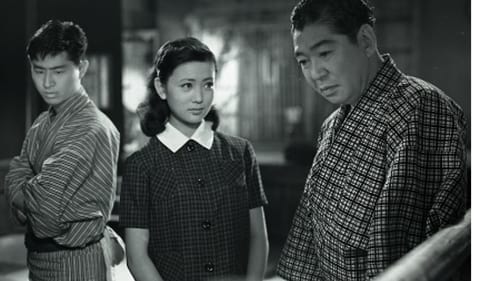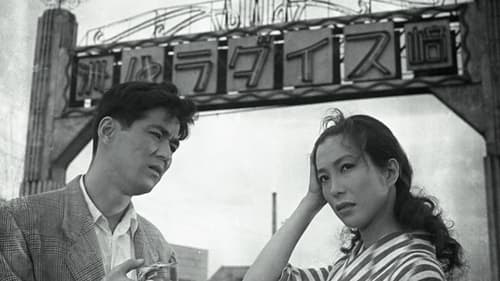
Pinku from 1970.

Pinku from 1969.

Pinku from 1969.

Pinku from 1969.

Pinku from 1969.

Pinku from 1969.

Masako, the young lady of the family estate, returning from overseas following the death of her diplomat father. She had originally left in opposition to his second marriage to the avaricious Tomoko, who now parades her new lover Goro around the house as if it were her own. When the family lawyer informs the gathered masses that it is Masako who is the legal inheritor of the entire estate, her elder sister Sumie and fiance Shinjiro join Tomoko and Goro in hacking up the unfortunate heiress with an axe. It is not long before the assorted pieces of Masako begin cropping up to drive them all insane, followed by her apparition in the traditional white smock with eyes peering wildly through straggly black hair.

Set in the Edo Era, the film opens with a group of women being convicted of various crimes. The rest of the film is given to graphic depiction of the tortures the women endure as part of their sentences.

Pinku from 1968.

Caught up in the swirling tide of student protests and riots, a young man becomes the unintentional murderer of a policeman. Handcuffed and enroute to jail, he escapes from the authorities and comes across a young woman on the beach, who is intent on committing suicide. The two embark on a passionate and violent affair.

A young wife is murdered by her husband who drugged her and left her on a railway. Her severed head soon starts to exact revenge on the murderer.

Gendarme, Yanagihara
A girl, whose parents were humiliated and killed by a policeman for suspected spy action during the war in China, takes revenge by torturing and then shooting him, the killer.

Pinku from 1967.

Kensuke Ishizuka
Pinku from 1965.

Early pinku.

Early pinku.

Miyabe Teizo
1961 Japanese film about the Shinsengumi.

Taneda
Действие фильма происходит в Токио в 1950-е годы. Сёити мечтает стать барабанщиком в джазовом ансамбле. Он не обделен талантом, но из-за своего необузданного характера часто попадает в неприятные ситуации. Хозяйка джаз-банда Мияко берет его под свое покровительство, после того как ее протеже и любовник Чарли Сакурада изменил ей с танцовщицей Мэри и ушел из ансамбля, чтобы начать самостоятельную карьеру. Соперничество Сёити и Чарли не ограничивается музыкальной сценой, иногда свое превосходство приходится доказывать кулаками. Но больше всего Сёити страдает оттого, что мать считает его ни на что не годным тунеядцем. Пример младшего брата Эйдзи, учащегося в музыкальном колледже, служит ему постоянным укором…

Kakunoshin Ikeda
The action of this historical drama takes place against the background of poverty and hunger in the city of Edo and depicts young people rebelling against the contradictions of feudal society.

Kanako is an intelligent and beautiful girl in her third year of high school, but there was a dark shadow. Raised by her father, Jusaburo, who is the owner of the Matsukawa troupe, she grew up without knowing the love of her mother. She has been on stage since she was a child, but oneday she cried and complained to her father, and she stopped going to school. In a mock exams, Kanako overtook her classmate Tetsuji to take the lead. That evening, Kanako went to the Yasue Theater in the neighboring town with Eikichi, and saw the affair of her stepmother, Yumi, who should have been resting due to her illness. The man ran away in a hurry, and Yumi confessed that Kanako's mother, Miyako, had also run away for the same reason...

Soba Shop Owner
Цутаэ покинула дом терпимости и решила начать новую жизнь с Ёсидзи, но он потерял работу и не может придумать, как им жить дальше. Пытаясь выкрутиться из неприятностей, парочка оказывается возле района красных фонарей. В маленьком баре Тигуса они решают, что делать дальше: отчаянно бороться с бедностью, или просто расстаться, и поодиночке искать сладкой жизни? Всё это происходит на фоне сезона дождей, который в Японии символизирует тоску и одиночество.

Based on the play ”Mabuta no haha” by famed author Shin Hasegawa, this is the first major starring role for Tomisaburo Wakayama. This heartfelt story concerns a wandering gambler from Banba by the name of Chutaro. Set during the Tenpo Period, Chutaro runs afoul of Boss Sukegoro of Iioka. Pursued by vengeance seeking swordsmen, Chutaro displays his phenomenal martial art skills. Abandoned as a child, he seeks to find his long lost mother, while at the same time fighting off numerous attacks by Iioka’s men.

The film is about the Yamato's suicide mission to Okinawa in March 1945 to defend the homeland threatened by U.S. bombers. Adapted from Mitsuru Yoshida's 1952 book "Requiem for the Battleship Yamato".

Based on the story of Shimizu no Jirocho.

In pre-war Shanghai, a man falls in love with a mysterious woman, but she eventually disappears. Back in Japan, he is obsessed by her memory and tries to recreate the world he knew then.

After mastering swordsmanship at the dojo of Chiba Shusaku, and unable to serve a clan due to his illness, Hirate Miki becomes a ronin who winds up as bodyguard to Shigezo of Sasagawa leading up to an epic battle.

Jidai-geki about the life of Yasubei Nakayama, a famous ronin who did participate in the revenge against Lord Kira Yoshinaka as detailed in Japan's famous epic Chushingura

Kazamado no Hanji
Jidai-geki by Kiyoshi Saeki

Japanese comedy film.

Youth in the town A
One Sunday morning, Toshio Esaki, a young dentist, wakes up in his clinic. It seems that he was drunk and spent the night in the clinic instead of going home. When he goes into the laboratory to get a drink of water, he finds a woman wearing a green striped Western-style dress lying there.

Journalist
A film by Kiyoshi Saeki

На землях замка Набэсима происходят странные вещи: люди напуганы криками страшной кошки, неизвестно откуда появляется доска для игры в го, которая становится причной раздоров и ссор, люди бесследно исчезают. Кто во всем этом повинен, призраки из иного мира или реальные злоумышленники, которые специально сеют панику и раздор?

Shizuko Kasagi and Hideko Takamine star as young women who try to raise money for a needy old friend by becoming wandering singers who work for tips in Tokyo's Ginza nightlife district.

Shiroi
Set in wartime at the Yawata Steel Works in Tobata, Yawata, and Kokura cities in Fukuoka Prefecture, the film depicts people taking on the evil blast furnaces that prevent increased production. The film was shot on location at the actual Yawata Steel Works for an extended period of time, and special effects were created using a miniature blast furnace that closely reproduces the actual one.

War-time jidaigeki by Eisuke Takizawa. Didn't find anything about it online, but Takizawa was a well-regarded director in his time. Akira Kurosawa worked as A.D. on several of his films.

Masato Narishima
This epic depicts the battle between Uesugi Kenshin and Takeda Shingen. The focus of the story is the struggle by the unit leader in charge of the main supply wagons and the supply troops to transport materiel to the Uesugi army. To this are added episodes involving an itinerant woman.

Jurobei, a kaisen tonya (wholesaler in port) in Awa, was wronged and killed on the day of the Dance Festival by the evil merchant & the chamberlin. His brother (Kazuo Hasegawa) vowed vengeance on the day of his brother's death. So every year the villains are worried during the Awa Dance Festival (which is part of the Obon festival), but nothing has ever happened, until seven years later...

Iemitsu's retainer
A sentimental tale of the filial love between shogun Iemitsu (matinee idol Hasegawa) and his loyal old retainer Hikoza (comedian Roppa, playing somewhat against type).

This is the only surviving “Mito Komon Manyu-ki” film. This release also known as "Adrift Tour Memoir" or literally "Mito Komon's Pleasure Trip" is an 80-minute compilation of the first (東海道の巻 or "Tokaido no maki") and second (日本晴れの巻 or "Japan's Fine Weather Reel") parts (147 minutes), which were re-edited and screened at a time when presentable films were dried up immediately after the defeat of the war.

Japanese film.






















